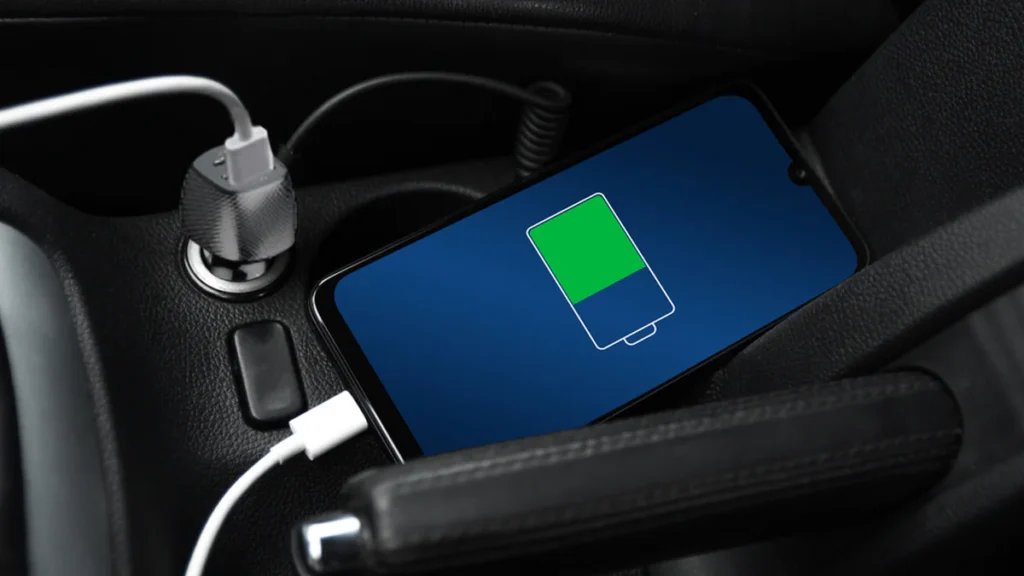Table of Contents
USB cord to charge your phone and become an integral part of life. Are you OK with the cord being longer if it means it takes longer to charge? What is the correct length of a USB C cable, How long the ideal USB C Cable should be for the best charging speed? You can find everything you need here.
Understanding the Basics of Cable Length and Power Delivery
The long USB C cable may change how much power it sends from one end to the other. Resistance in the wire means energy is lost when an electric current flows through it. As a result, the voltage goes down as the current meets its goal.
But besides the wire’s length, its cross-sectional area, temperature, and the type of material it is made of are also things that affect its resistance between two points.
The Role of Resistance in Cable Length
The longer the wire of a long USB cable, the more resistance there will be to the electricity. This means that a cable that is one meter long will have less resistance than a cable that is two meters long. In the same way, as the temperature goes up, so does the resistance of a wire. Since it is warmer in warm places than in cold places, resistance will be higher when charging a device in warm areas.
Resistance is linked to the cross-sectional area in the wrong way. This means that a bigger wire will have less resistance to the electricity. But if you use a smaller wire, the resistance will go up. In the United States, a gauge is usually used to measure a wire’s thickness. A smaller gauge number means the wire is dense, while a higher gauge number means the wire is thin. Because of this, resistance is higher in cables with a bigger gauge and lower in wires with a smaller gauge.
The electrical resistance of the wire is also affected by the material it is made of. Silver is the least resistant metal. Copper, gold, and aluminum are the next least resistant. Silver costs more than copper, so copper is often used in USB and other connections. On the other hand, copper metals are also used to strengthen the wires.
Analyzing Voltage Drop in Longer USB Cables

A power drop may happen when you use a more extended USB connection. This is now generally known. However, as we’ve already seen, the voltage drop can be affected by several things, with the wire diameter being the most important. USB cords ‘ temperature and wire type are less crucial because most use copper wires. Using a short or long connection won’t significantly affect the temperature around you.
Voltage loss happens, which is a shame. To keep total electric resistance as low as possible, companies that make USB connections usually keep this in mind and use thinner wire in longer lines. Longer cords can lose power, slowing the charging process if the maker still needs to do this. Unreliable and off-brand businesses sometimes use bigger gauge wires in longer connections to save money.
But this won’t happen if USB-IF accepts the cable and comes from a reliable company. The USB standard is kept up to date by the non-profit USB-IF or USB Implementers Forum. This group also suggests minimum DCR (DC resistance) standards. For a connection to meet the USB-IF standard, the drop from one end to the other must be more than 500 mV (0.5V) at the maximum current.
Real-World Impact of Voltage Drop
Here’s an example of what a 0.5V loss might mean for how fast your phone charges: Your phone should get 15W of power from a charger that gives out 3A of current at 5V. The energy drops, though, from 5V to 4.5V. This means your phone can only be charged at a speed of about 13.5W. Also, the most significant drop that USB-IF-approved cords can have is 0.5V, and that only happens with cables that are two, three, or more meters long.
If you want to buy a long USB C cable, you should look for one that is accepted by the USB-IF and comes from a respected company. Otherwise, you will have to deal with slower charges.
The Role of Fast Charging Standards
Not only do cord makers think about long-distance, thin-wire power loss, but fast charge standards like Qualcomm Quick Charge do, too. As a result, these guidelines require a high power to try to ease worries about charging.
In this case, Quick Charge technology lets you use higher power levels when charging. When Quick Charge is used instead of 5V, 9V or even 12V may be used. This helps make up for the power loss that happens with long cords. This means the higher starting voltage ensures the device gets enough power to charge quickly, even if the voltage drops.
Practical Considerations for Consumers
There is some evidence that the length of a USB cord may affect how quickly it charges, but you should be OK with this as a customer. Most people would only buy a USB cord for one or two meters because there is little power loss. If you want a more extended USB connection, you should look for one made by a reliable company and certified by USB-IF. Our lists of the best Lightning and USB-C connections give you more options. Sometimes iPhones are not charging or charging very slowly and you can fix that.
Ensuring Optimal Charging Performance
In conclusion, the length of a long USB C cable may affect how fast it charges because longer cables have higher resistance and lower power. However, this effect is usually rare, especially for cables up to two meters long. Reliable makers and fast charging standards have considered these factors, so you can be sure that your devices will charge quickly and correctly even if the cords are longer. If you want the best charge performance, when you buy a USB cord, pay more attention to quality and approval than length.
Also Read:

